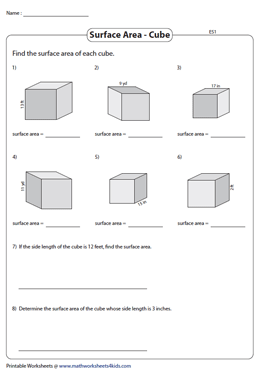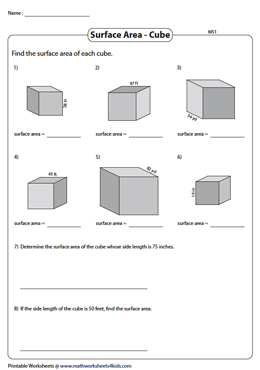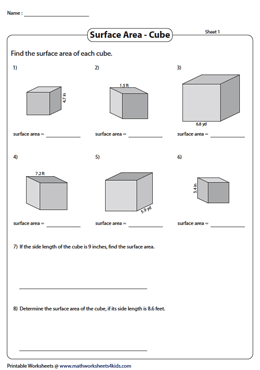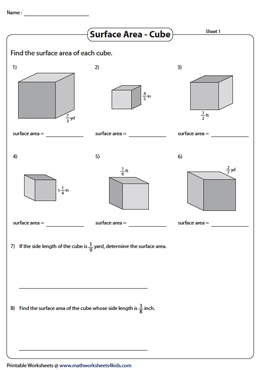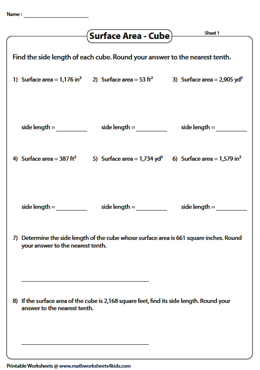Surface Area of a Cube Worksheets
Surface area of a cube worksheets provide extensive practice in finding the measure of the total area that the surface of the cube occupies using the given side length. These printable worksheets pose two levels of difficulty to 6th grade, 7th grade, 8th grade, and high school students with integers, decimals and fractional dimensions. Also, included here are pdfs to find the length of the edge using the surface area. A cube as we know is made up of 6 square faces and surface area is nothing but the sum of the areas of these faces. Begin finding the surface area of cubes with our free worksheets!
Surface Area of Cubes with Integer Side lengths | Easy
Let grade 6 students get accustomed to using the surface area of a cube formula SA= 6s2, where "s" is the side length. Plug the side length, which is an integer ≤ 20 and compute the surface area of each cube.
Surface Area of Cubes with Integer Side lengths | Moderate
Perk up with this set of worksheet pdfs on determining the surface area of a cube. Calculating the area of one of the square faces using the 2-digit edge length and then multiplying by 6 is all you have to do.
Surface Area of Cubes with Decimal Side lengths
Step ahead with this unit of printable worksheets on finding the surface area of cubes. Substitute the decimal side length in the surface area of a cube formula and evaluate.
Surface Area of Cubes with Fractional Side lengths
Make grade 7 students conversant in calculating the surface area of cubes whose side length is presented as fractions. Convert the mixed fraction to improper if required, square the side length and multiply by 6.
Finding the Side length of a Cube
Have grade 8 and high school students work backward by rearranging the surface area formula, making the edge length the subject as in edge length s = √a/6; where "a" is the surface area.
Related Worksheets

